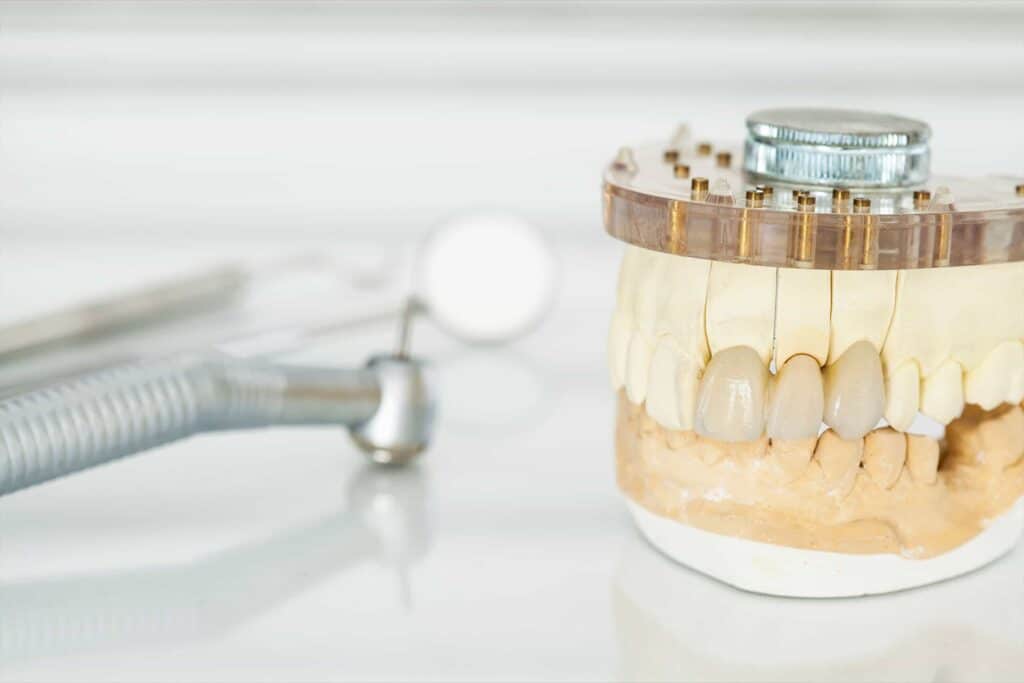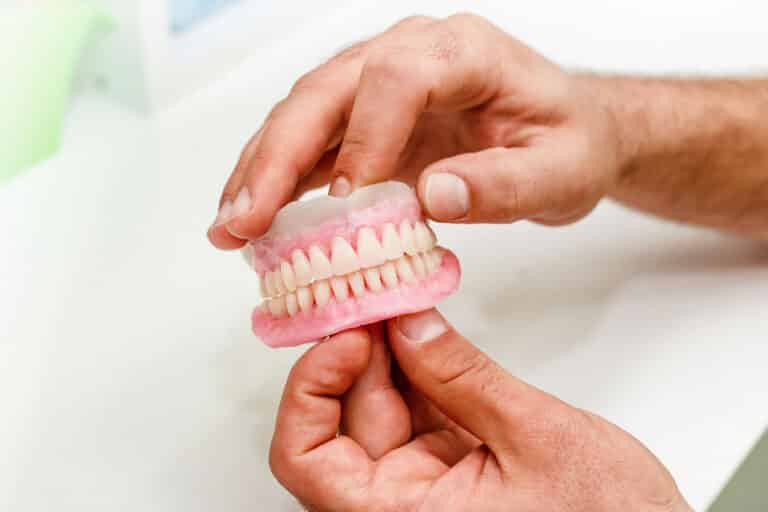Are your gums receding? This is a common problem and there are a few possible reasons why it’s happening. First, let’s take a look at what healthy gums look like. Healthy gums are pink and fit snugly around your teeth. If your gums are receding, they may appear to be pulling away from your teeth and the teeth may appear longer. Usually you can see a more yellow part of the tooth as well. However, there are a few different things that can cause gum recession, so let’s explore some of the most common causes.
Gum recession is a problem in which the tissues that cover the roots and bone begin to pull back and expose more tooth. Typically the type of gum tissue that recedes is the robust, thick tissue, called keratinized gingiva. Gum recession may result from genetic predisposition or shearing forces on facial structures during heavy jaw movement (such as during bruxism). Additionally, gum recession may also be caused by periodontal disease, plaque accumulation, incorrect brushing technique, using coarse toothpaste, and aging.
The most common factors that contribute to gum recession are: Age, Abrasion, Bruxism, Hereditary, Gingival Quality and Hygiene.
- Age: As we age, our gums gradually recede. This is a natural part of the aging process.
- Abrasion: Gum recession can also occur due to abrasion from brushing too hard or using a toothbrush with bristles that are too stiff. Using coarse toothpaste contributes to gum recession as well.
- Bruxism: Grinding or clenching your teeth can put too much pressure on your gums and cause them to recede.
- Hereditary: Gum recession can be hereditary from generation to generation.
- Gingival Quality: The health and quality of your gums can also play a role in gum recession. Also, poor oral hygiene can lead to gingivitis, which can eventually lead to gum recession. Additionally, the thickness and quality (attached or unattached) plays a role in recession as well.
What Causes Gum Recession?
Gum recession is a common problem that can have various causes. Some factors that can lead to gum recession, such as age and heredity, are beyond our control, but there are also some factors that are under our control. Some controllable factors that can lead to gum recession include:
- Abrasion: This occurs when the gums are rubbed raw by toothbrush bristles or dental floss.
- Bruxism: This is the habit of grinding your teeth, which can wear down the enamel and lead to gum recession.
- Quality: If the gum quality is poor, it can be improved with several types of gum grafts.
Gum recession is a condition in which the gums around the teeth pull away, exposing more of the tooth’s surface. Gum recession can be caused by several factors, including:
- Poor oral hygiene, which can cause plaque and tartar to build up on the teeth
- Brushing too hard or using a hard toothbrush
- Using a coarse toothpaste
- Gum disease
- Teeth grinding or clenching
Gum recession can be treated by improving oral hygiene, using a softer toothbrush, and using a nightguard. For some people practicing stress-relieving techniques such as yoga or meditation can be effective. If gum disease is the underlying cause of gum recession, treatment may involve scaling and root planing (a deep cleaning procedure) or surgery.
If you are concerned about gum recession, talk to your dentist. They can assess the severity of the condition and recommend the best course of treatment.
How do I Stop my Gums from Receding?
Gum recession has various causes such as over brushing, gum disease, improper oral hygiene and genetics. Symptoms of gum recession are tooth sensitivity, toothache, longer appearing teeth, and significantly yellow teeth (exposed roots). Gum recession can be treated with proper oral hygiene, dental checkups and sometimes surgery. There are many ways to improve your gingival quality:
- Brush your teeth at least twice a day with a soft toothbrush and fluoride toothpaste
- Floss daily
- See your dentist for a checkup at least twice a year
- Use an antiseptic mouthwash every day
- Avoid aggressive brushing and overuse of dental floss
- Proper angulation of any water flossers – point the nozzle perpendicular to the surface of the tooth and not into the gums as it may cause damage
- Quit all forms of smoking
- Consume a balanced diet
How Can I Prevent my Gums From Receding?
Gum recession is a common problem that can occur when someone does not take good care of their teeth and gums. Poor oral hygiene, grinding, and improper brushing are the main causes of gum recession. Gum recession can also be caused by tooth decay, periodontal disease, and trauma to the gums.
There are several things that you can do to treat gum recession. The first thing that you need to do is improve your oral hygiene. This means brushing your teeth twice a day, flossing daily, and using mouthwash. You also need to see your dentist regularly for checkups and cleanings.
When it comes to brushing your teeth, it is important to use a toothbrush that has soft bristles. When brushing, use circular motions and make sure to brush on the gum line. Be sure to brush for two minutes at least twice a day. To prevent gum recession while brushing, avoid using excessive pressure and cleaners that are too harsh. The main goal of brushing is to remove the soft plaque, not the hardened tartar. Be sure to use a soft-bristled toothbrush and fluoride toothpaste, and to brush gently in a circular motion.
How Can I Treat Gum Recession?
If you’re experiencing gum recession, it’s important to seek professional treatment. In some cases, preventing further recession may be possible through good oral hygiene habits and regular dental checkups. However, in other cases it may be necessary to undergo a procedure to reverse the previous recession. Your dentist will be able to recommend the best course of treatment for you.
One of the most common ways to treat gum recession is to use a gum graft. A gum graft involves taking tissue from another part of your mouth and using it to cover the receded gums. There are also a few other methods that can be used to treat gum recession, such as:
- Using a dental adhesive to attach a gum graft to the receded gums
- Performing a periodontal plastic surgery procedure to cover the receded gums
- Using laser therapy to help promote new gum growth
- Taking antibiotics to help fight off any infection that may be causing the recession
If you are concerned about your gum recession, be sure to talk to your dentist. They will be able to help you determine the best course of treatment for your individual case.
Conclusion
Gums recede for a variety of reasons including gum disease, excessive grinding, improper hygiene, and even genetics. If your gums are receding, it’s important to see your dentist to determine the cause and begin treatment. Left untreated, gum recession can lead to infection and tooth loss.





